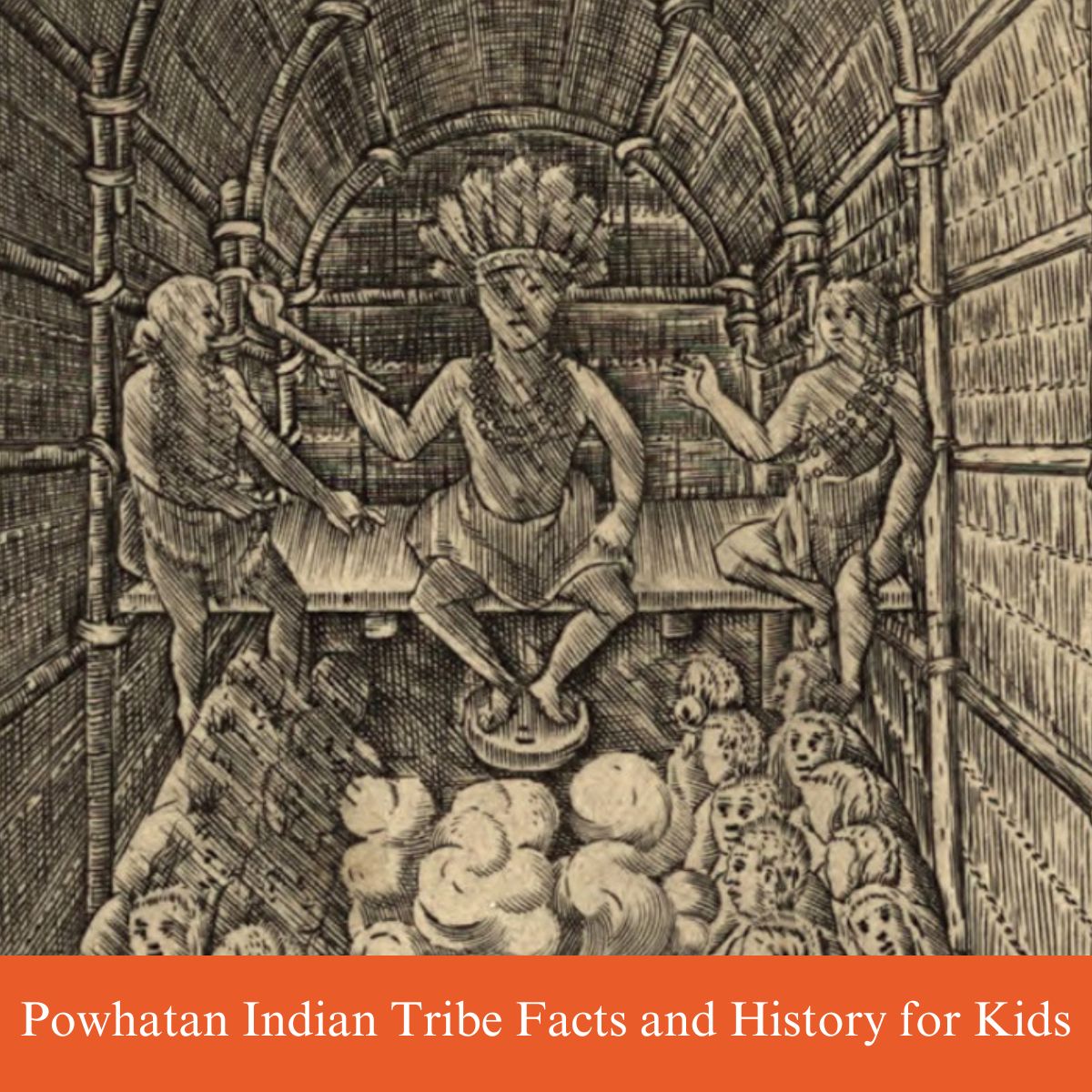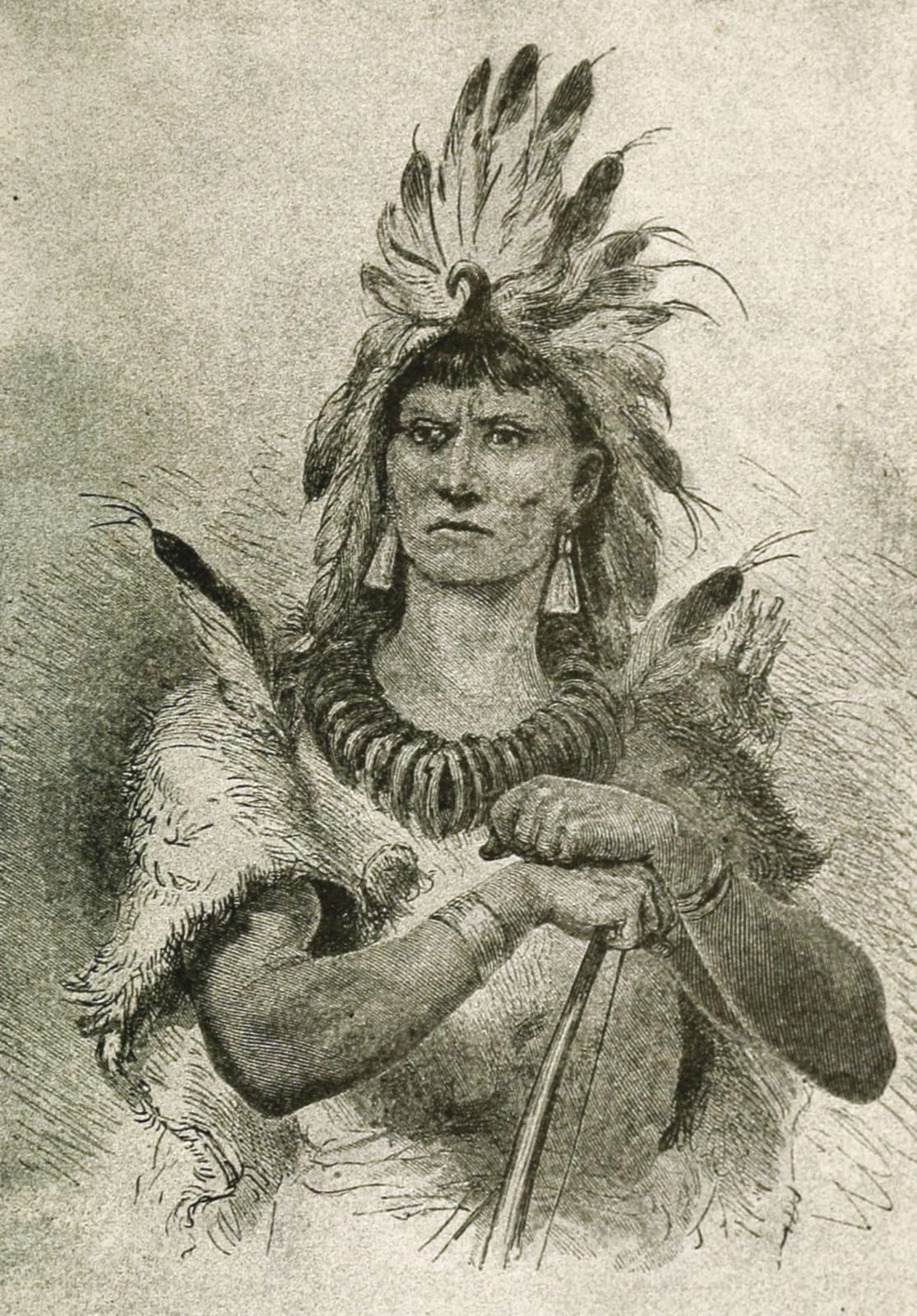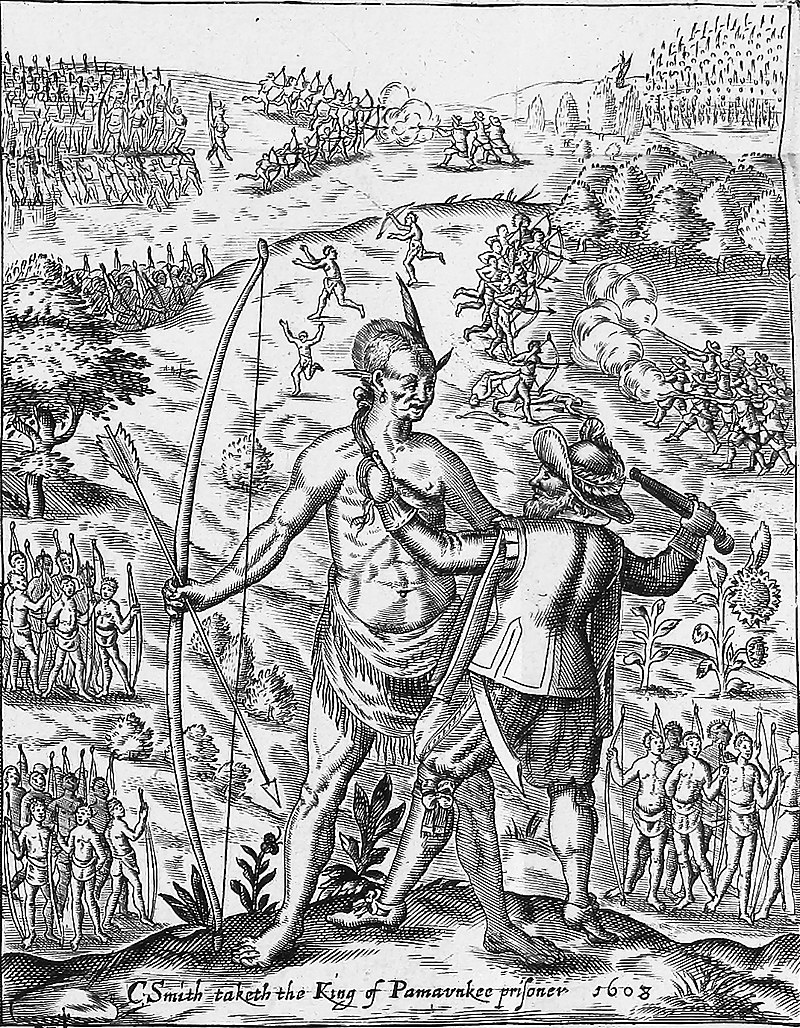The Powhatan Indian Tribe is one of the most infamous tribes in Colonial American history. This is due to their involvement with John Smith, John Rolfe, and the Jamestown colony.

Pocahontas also comes from this tribe and played an important role in the development of Jamestown.
However, the Powhatan Indian Tribe had a history that pre-dates Jamestown and was a proud nation that dominated much of the political landscape of the Virginia Colony.
The name Powhatan can also refer to the chief of the tribe.
Jump to:
History

The Powhatan people may refer to any of the Native American Algonquian people that are traditionally from eastern Virginia. All of the Powhatan groups descend from the Powhatan Confederacy. In some instances, The Powhatan may refer to one of the leaders of the people. This is most commonly the case in historical writings by the English.
The Powhatans have also been known as Virginia Algonquians, as the Powhatan language is an eastern Algonquian language, also known as Virginia Algonquian. It is estimated that there were about 14,000–21,000 Powhatan people in eastern Virginia when the English colonized Jamestown in 1607.
First Contact
The Powhatan Confederacy was where the English made their first permanent settlement in North America. Conflicts began immediately between the Powhatan people and the English. Within two weeks of the English arrival at Jamestown, deaths had occurred.
The colonists wanted to have friendly relations with the natives and had even planned to trade with the Indians for food. An exploration party under Christopher Newport went up the James River to broker different relations. This is where he met Parahunt, a Powhatan.
At first, he was mistaken for a leader, but it was his father who was the leader of the Powhatans.
Settlers coming into the region needed to befriend as many Native Americans as possible due to the unfamiliarity with the land. Not too long after settling down, they realized the huge potential for tobacco. In order to grow more and more tobacco, they had to impede on the native territory.
Captain John Smith was on a hunting/trade mission when he and his associates had a battle with the Powhatans. He was captured and sentenced to death until Pocahontas convinced her father to set him free.
In 1608, Captain Newport realized that the Powhatan tribe's friendship was crucial to the survival of the small Jamestown colony.
When Captain John Smith became the leader of the colony, his intention was to clear the area of the natives, and he pursued actions to drive them out of the territory.
Anglo-Powhatan Wars
In November 1609, Captain John Ratcliffe was invited to Orapakes, Powhatan's new capital. After he had sailed up the Pamunkey River to trade there, a fight broke out between the colonists and the Powhatan. All of the English ashore were killed, including Ratcliffe, who was tortured by the women of the tribe. Those aboard the pinnace escaped and told the tale at Jamestown.
During that year, the tribe attacked and killed many Jamestown residents. The residents fought back but only killed twenty. However, the arrival at Jamestown of a new Governor, Thomas West, 3rd Baron De La Warr (Lord Delaware), in June 1610 signaled the beginning of the First Anglo-Powhatan War.
A brief period of peace came only after the capture of Pocahontas, her baptism, and her marriage to tobacco planter John Rolfe in 1614. Within a few years, both Powhatan and Pocahontas were dead. Powhatan died in Virginia, but Pocahontas died in England. Meanwhile, the English settlers continued to encroach on Powhatan territory.

After Wahunsenacawh's death, his younger brother, Opitchapam, briefly became chief, followed by their younger brother, Opechancanough. In 1622 and 1644, he attacked the English to force them from Powhatan territories.
Both these attempts were met with strong counter-attacks from the English, ultimately resulting in the near destruction of the tribe.
The Second Anglo–Powhatan War that followed the 1644 incident ended in 1646 after Royal Governor of Virginia William Berkeley's forces captured Opechancanough, thought to be between 90 and 100 years old.
While a prisoner, Opechancanough was killed, shot in the back by a soldier assigned to guard him. He was succeeded as Weroance by Necotowance, and later by Totopotomoi and by his daughter Cockacoeske.
The Treaty of 1646 marked the effective dissolution of the united Confederacy, as colonists were granted an exclusive enclave between the York and Blackwater Rivers.
This physically separated the Nansemonds, Weyanokes, and Appomattox, who retreated southward from the other Powhatan tribes, then occupying the Middle Peninsula and Northern Neck. While the southern frontier demarcated in 1646 was respected for the remainder of the 17th century, the House of Burgesses lifted the northern one on September 1, 1649.
Waves of new immigrants quickly flooded the peninsular region, then known as Chickacoan, and restricted the dwindling tribes to lesser tracts of land that became some of the earliest Indian reservations.
In 1665, the House of Burgesses passed stringent laws requiring the Powhatan to accept chiefs appointed by the governor. After the Treaty of Albany in 1684, the Powhatan Confederacy all but vanished.
By the time of the American Revolution, the once-proud nation no longer existed in the way it had in the 17th century.
Myth of Pocahontas
The myth that has been carried on for decades has been the relationship between Pocahontas and Captain John Smith.
The two never had any romantic relations, and her intervention was purely diplomatic. Her English husband was John Rolfe, who became a wealthy tobacco planter.
The myth has been given much recognition due to popular movies such as Disney's Pocahontas and the more recent movie The New World.
